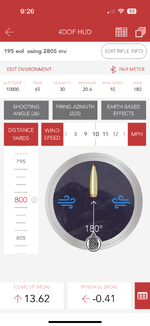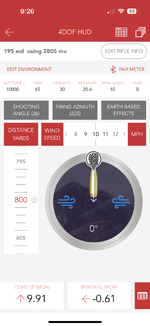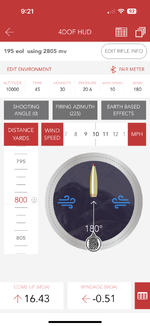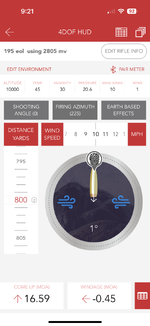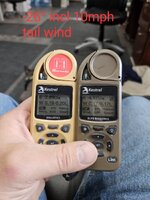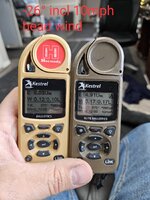stan_wa
WKR
When I use a high angle shot and wind combination, headwind or tailwind. I’m getting a result that doesn’t seem right to me. I noticed this after trying to take a 30° downhill shot at 700 yards on a rock.
If you take a look at the 4 screenshots below, you will see that the effect on come up aka bullet drop is significantly different between head wind and a tailwind when there’s angle applied.
I know at moderate angles, horizontal compensated distance can be a good alternative, but in the user guide for the 4 dof program, it advises against using horizontal distance in favor of baking it into the solver.
My theory is that it’s considering a headwind or tailwind to have a component working in line with gravity, when shooting at an angle. kind of like wind, drift but , upwards, or downwards, but the effect on drops seems much too large.
Notice that headwind versus tailwind at 800 yards makes .1 MOA difference in drop for a level shot but about 4 moa difference when applied to a 26 degree angle shot.
Should wind and angle solutions be trusted?
Is the result realistic? my field testing says no
If you take a look at the 4 screenshots below, you will see that the effect on come up aka bullet drop is significantly different between head wind and a tailwind when there’s angle applied.
I know at moderate angles, horizontal compensated distance can be a good alternative, but in the user guide for the 4 dof program, it advises against using horizontal distance in favor of baking it into the solver.
My theory is that it’s considering a headwind or tailwind to have a component working in line with gravity, when shooting at an angle. kind of like wind, drift but , upwards, or downwards, but the effect on drops seems much too large.
Notice that headwind versus tailwind at 800 yards makes .1 MOA difference in drop for a level shot but about 4 moa difference when applied to a 26 degree angle shot.
Should wind and angle solutions be trusted?
Is the result realistic? my field testing says no

